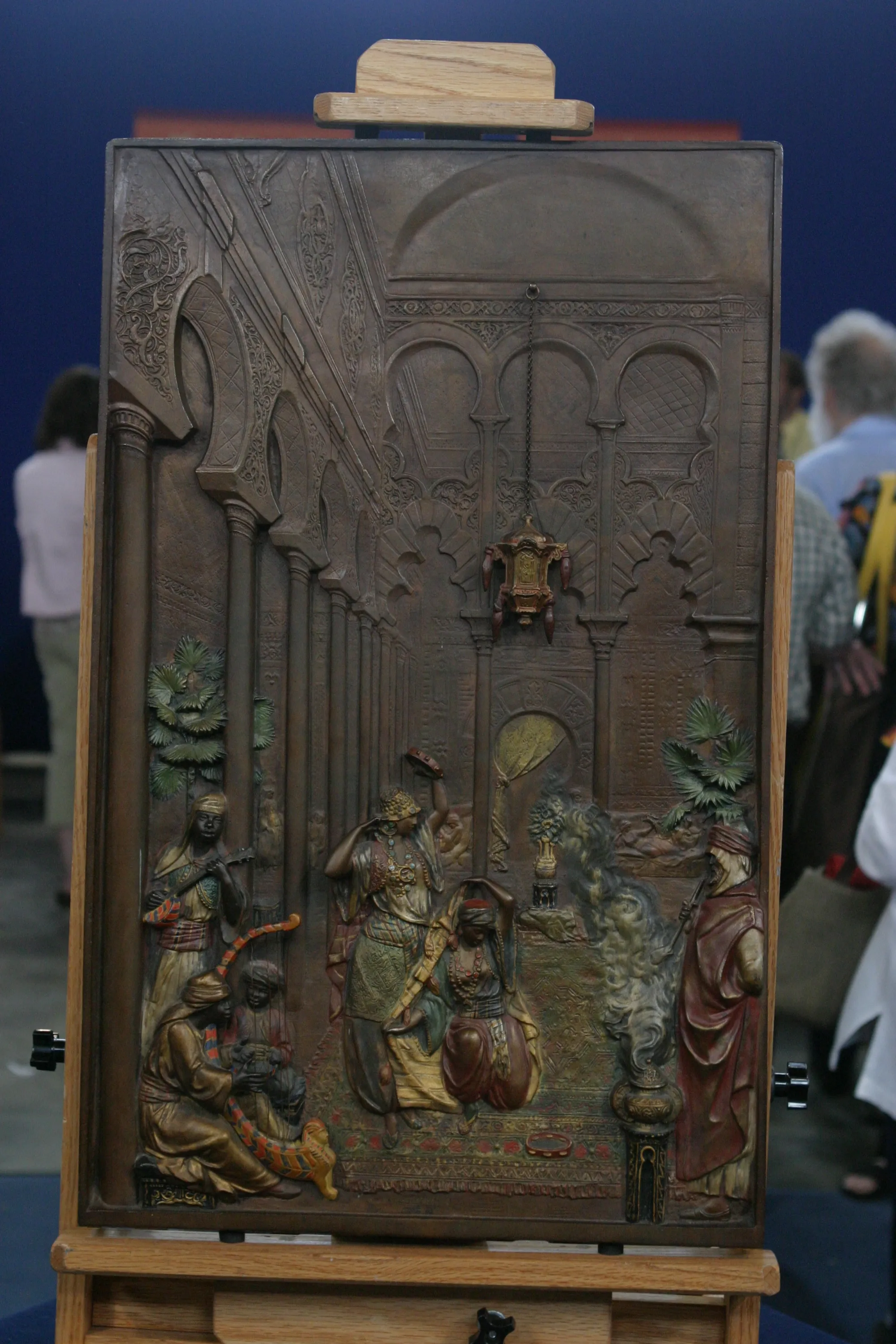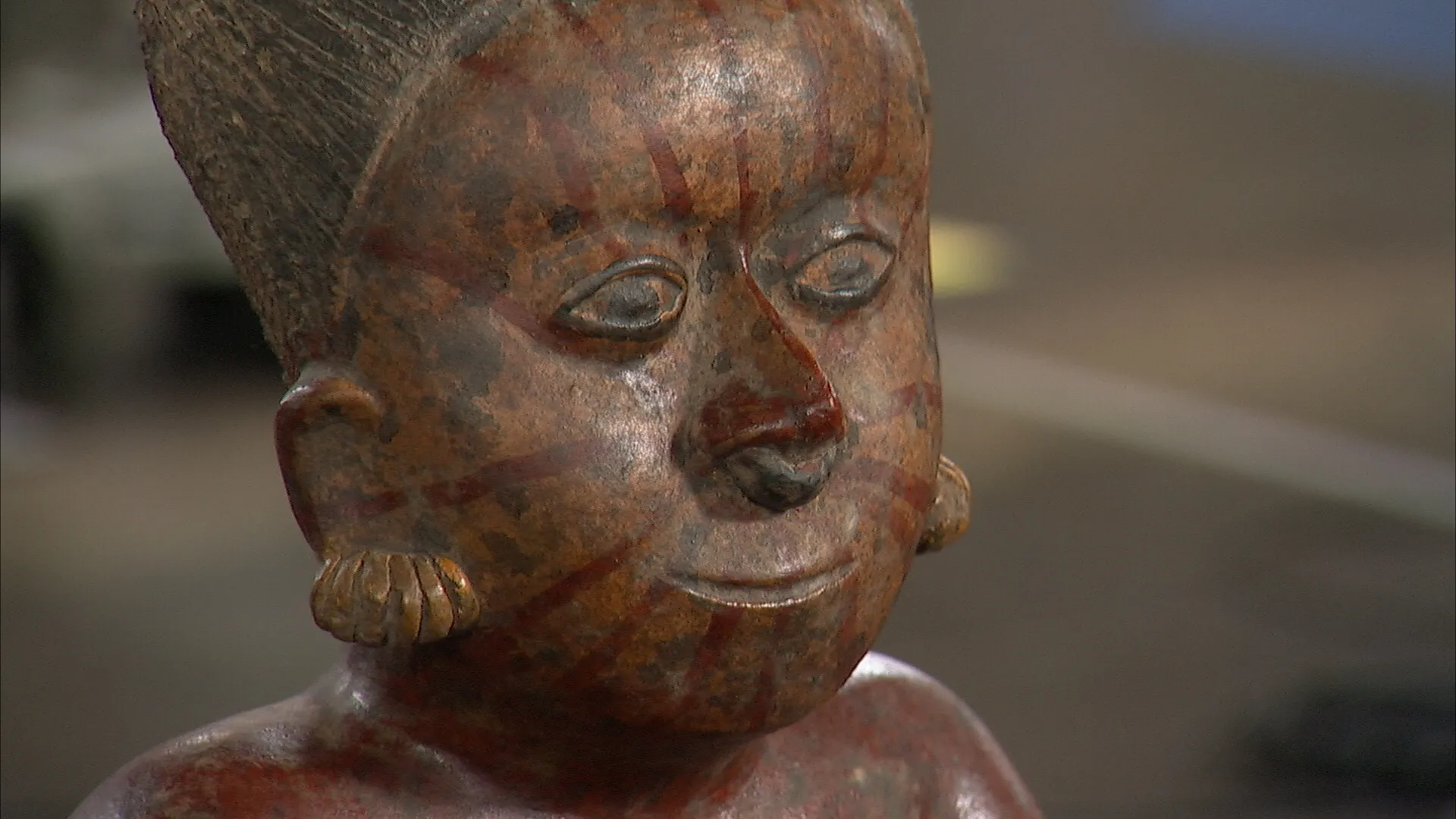GUEST: I got it from my sister-in-law. When her grandmother died, she inherited it and then she sold it to me.
APPRAISER: She sold it to you. Do you remember... and what'd you pay? Can you tell me?
GUEST: Uh, $240.
APPRAISER: $240, okay.
GUEST: Yeah. I've been told it was made in 1767... And it was a set.
APPRAISER: It was part of a set, okay.
GUEST: Yeah, there was a great big bed and then this dresser.
APPRAISER: How did they get that date, 1767?
GUEST: They just always...
APPRAISER: It's been told it was 1767, right?
GUEST: Yeah.
APPRAISER: Okay. I have to tell you, it's not 18th century. It's about 100 years after that, probably from the 1870s or 1880s. The evidence of why it's not 18th century is right here. What you have here, you have these... This piece was made up of all old parts by somebody that just decided to... to make a wonderful piece, a piece with a lot of personality. His hand print is right here from the varnish he put on here. He left his DNA print right there. If you did fingerprint analysis and the guy were around, we could identify him. So there's his hand print from the varnish. You have round nails. These nails are probably very late 19th century, 1890s or so-- round nails-- and then on the bottom, all different kinds of old wood with old holes in them. So they've reused lots of old crates and different wood like that to make this piece. So it's construction by someone who hasn't worked in a... probably a cabinet shop. They might have made it, like, in their backyard, you know, or their basement or something like that as a wonderful project. But what this is... one of the folk art gentlemen here of the experts said, "Leigh, it's kind of clunky, but it's very, very funky." And that's a good thing because it has such personality.
GUEST: Oh, okay.
APPRAISER: I mean, how can you not love this piece? If you go down to the bottom and you've got the fish, nice pair of fish. A little further up from the water, you've got a nice pair of crabs. On land, some leaves, so we're going from the water to the shore to the... to the grass, to, of course, the ducks. And on the front here, this hand holding a pipe. It was an Indian... a Native American symbol, and it was popular in decoration on decorative items all through the late 19th century. And then down here, this wild looking kind of lion thing, I don't... Maybe it's the wild beast of Lake Superior, I don't know. Some fantasy beast. And then on the side, the ultimate couple, the top of the food chain... the fish, the fowl. You've got man and wife, right, on the side. Did you see the one...
GUEST: Is that a wife?
APPRAISER: The one in the front's a man and the one in the back is... she's fairly stern looking, but it's a woman with a bun hairdo, yeah, with a bun... You see it up on top?
GUEST: Oh, I thought those were hats.
APPRAISER: No, no, she has a hairdo, he has a hat, so it's man and woman and these would have held the towels in the bedroom. It's a wonderful piece of Americana. It's a... it has a personality. It has a... it has a great history. It really works and I love it and you've made my day because I could live with something like this. But I know I'm never going to because you're going to keep it, right?
GUEST: Yeah, I've enjoyed it.
APPRAISER: As a piece of folk art... it's as much folk art as furniture. It's worth about probably $3,000 to $3,500.
GUEST: Wow.
APPRAISER: So you did okay.
GUEST: Yeah. Yeah, I know it sure is unique.
APPRAISER: It's unique, it definitely is unique.
GUEST: Yeah.
APPRAISER: I love it.







